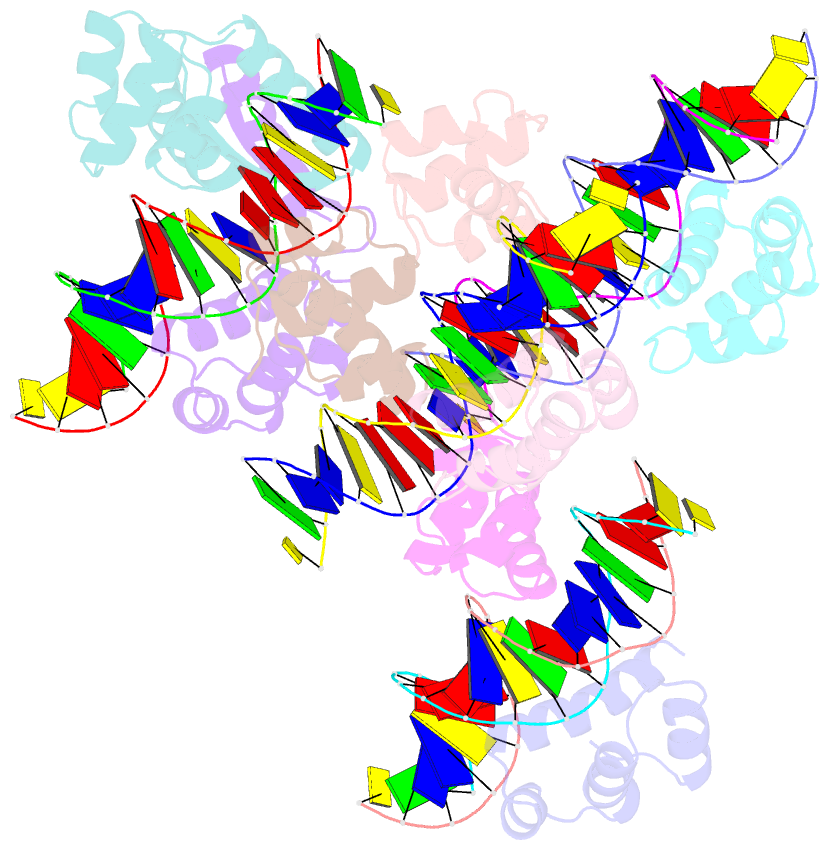Summary information and primary citation
- PDB-id
- 5clv; SNAP-derived features in text and JSON formats;
DNAproDB
- Class
- transcription
- Method
- X-ray (2.5 Å)
- Summary
- Crystal structure of kora-operator DNA complex (kora-oa)
- Reference
- Rajasekar KV, Lovering AL, Dancea F, Scott DJ, Harris SA, Bingle LE, Roessle M, Thomas CM, Hyde EI, White SA (2016): "Flexibility of KorA, a plasmid-encoded, global transcription regulator, in the presence and the absence of its operator." Nucleic Acids Res., 44, 4947-4956. doi: 10.1093/nar/gkw191.
- Abstract
- The IncP (Incompatibility group P) plasmids are important carriers in the spread of antibiotic resistance across Gram-negative bacteria. Gene expression in the IncP-1 plasmids is stringently controlled by a network of four global repressors, KorA, KorB, TrbA and KorC interacting cooperatively. Intriguingly, KorA and KorB can act as co-repressors at varying distances between their operators, even when they are moved to be on opposite sides of the DNA. KorA is a homodimer with the 101-amino acid subunits, folding into an N-terminal DNA-binding domain and a C-terminal dimerization domain. In this study, we have determined the structures of the free KorA repressor and two complexes each bound to a 20-bp palindromic DNA duplex containing its consensus operator sequence. Using a combination of X-ray crystallography, nuclear magnetic resonance spectroscopy, SAXS and molecular dynamics calculations, we show that the linker between the two domains is very flexible and the protein remains highly mobile in the presence of DNA. This flexibility allows the DNA-binding domains of the dimer to straddle the operator DNA on binding and is likely to be important in cooperative binding to KorB. Unexpectedly, the C-terminal domain of KorA is structurally similar to the dimerization domain of the tumour suppressor p53.





